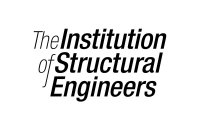It has been said that concrete is the most important construction material used by Mankind. This is partly due to the huge volumes produced and also due to the unique way in which concrete changes from its fresh, wet consistency to develop into reliable, strong and long-lasting structural elements.
Concrete used in Railway Engineering is expected to be safe and durable. Sometimes it may need to be visually appealing or designed to resist particularly aggressive environments. In all cases concrete needs to be well managed and this new training course is designed to provide an understanding of the processes involved in making a success of every concreting operation specific to Railway Engineering.
Aims & Objectives:
The course will enable delegates to:
- define current terminology used in the context of fresh and hardened concrete
- examine mix designs, recognize limiting values, suitability of cement, aggregates and admixtures for production of concrete
- select suitable consistence classes of fresh concrete for specific applications
- recognize the importance of cohesion and take action in the event of segregation
- use retarding admixtures to control the early-age behaviour of concrete
- specify strength and durability properties of concrete
- supervise the correct transporting, placing, compaction and curing of concrete
- perform tests on fresh and hardened concrete
- state permitted tolerances on slump
- apply conformity criteria for concrete strength
- state action to be taken in event of non-conformity
- achieve a high-quality surface finish in concrete
On completion of the course delegates will:
- Have an overall appreciation of the fundamental aspects of the production, placing and cure of concrete
- Be able to supervise the placing of the material with more confidence
- Be able to "test" the material and have a perspective on the significance of the results of such tests
- Appreciate the important of effective health and safety management of the concreting process
- Have an awareness of the problems - chloride contamination, alkali-silica reaction and carbonation
Course Outline:
The course covers the properties of concrete and its successful use in Railway Construction, giving an appreciation of the factors that are essential to the production, use and construction of concrete.
- Introduction - terminology of fresh and hardened concrete relevant to railway engineering
- New cement types
- Properties of fresh concrete - consistence, cohesion and segregation
- Developments in admixtures, the use of retarding water-reducers to control early-age behaviour of concrete
- Ways of preventing early-age cracking
- Checking mix design submissions - limiting values and materials suitability
- Selecting and testing the consistence of fresh concrete - the four standard tests, tolerances on slump
- Management of concrete construction - transporting, placing, compacting and curing - including effective health & safety management
- Strength properties of concrete - compressive, tensile and flexural
- Strength classes to EN 206-1 and BS 8500
- Testing for strength
- Conformity criteria for identity testing
- Action on non-conformity
- High quality surface finishes in concrete
Illustrated lectures and tutorials
- An opportunity to acquire a better grasp of the fundamentals of good concrete practice
- A de-mystification of this important subject
- Provided an wider perspective on "concrete"
- Clearer appreciation of the particular issues created in the railway environment
Intended For:
This course is suitable for a wide range of personnel engaged in Railway Engineering particularly those responsible for drawing up concrete specifications, checking or interpreting mix design submissions and whose role involves the supervision of concrete construction as applied to Railway Engineering. This includes the choice of materials, recognition of sound construction site practice and the use of correct terminology applied to concrete.
Pre-Course Requirements:
There are no pre-course requirements but delegates must bring a calculator.








